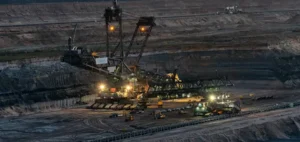The Chinese government has decided to increase the use of coal in its energy mix to ensure the security and reliability of its energy system, following the spike in global energy prices caused by Russia’s invasion of Ukraine and disruptions to domestic supply. In 2021, coal provided 56.2 percent of China’s electricity generation, but fluctuating renewable energy production has pushed policymakers to rely on reliable and easily dispatchable coal power to bolster baseload supply. The decision was motivated by the country’s energy security, as well as a decline in hydropower production due to scorching summer temperatures and a drought in southwest China, which led to power outages.
An increase in coal production
The National Development and Reform Commission (NDRC) has announced that it will strengthen the basic support role of coal and take measures to increase peak coal production while ensuring safety. China approved an additional 106 gigawatts of coal-fired power capacity last year, four times more than a year earlier, motivated by energy security considerations. Approximately 50 GW of this amount was allocated to construction.
Measures to improve oil and gas supply
The NDRC also stressed the importance of increasing domestic oil and gas supply. China imports about 40 percent of its gas consumption, and despite its strategy to boost natural gas use as a transition fuel to achieve carbon neutrality by 2060, it has slowed an aggressive campaign launched in 2017 to replace coal with gas, given supply shortages amid high global prices. The NDRC pledged to “strictly control the expansion of projects to replace coal with natural gas” and to continue reforming the oil and gas sector with a focus on improving the natural gas pricing mechanism to better reflect the cost of production and supply.
Renewable energies continue to be developed
China will also pursue the construction of a second batch of large wind and solar power plants. Although the reliance on coal is said to be temporary to cover supply shortages while the country develops renewables, new renewable energy production has not yet been able to cover all the growth in demand each year. David Fishman, senior director of the China-based energy consultancy, predicted that by 2023 or 2024, renewable energy generation should fully cover the growth in energy demand, after which coal consumption will begin to decline. China is committed to achieving peak carbon emissions by 2030 and carbon neutrality by 2060.






















